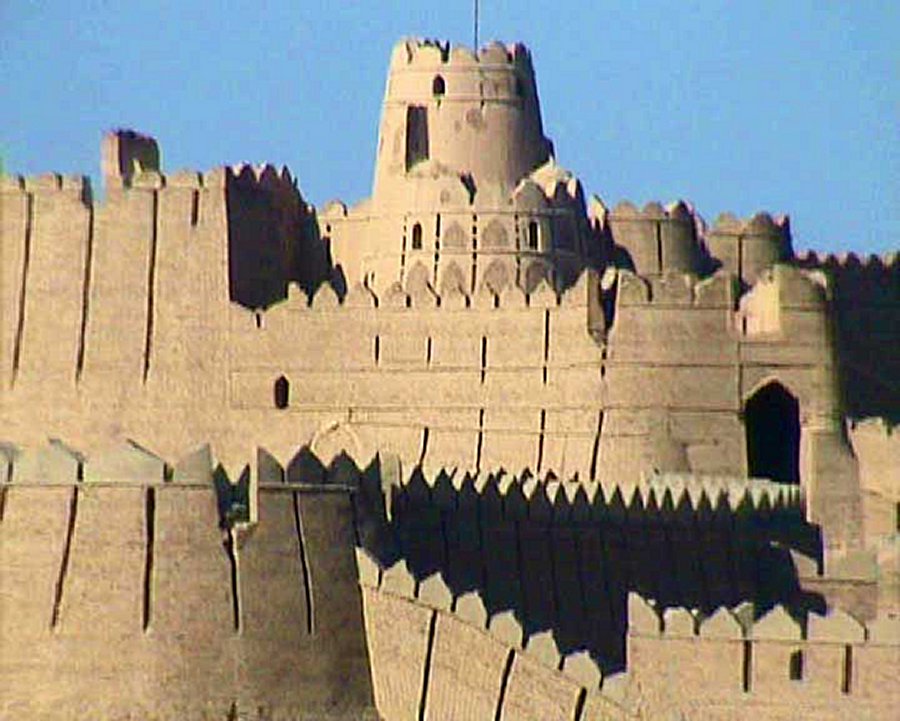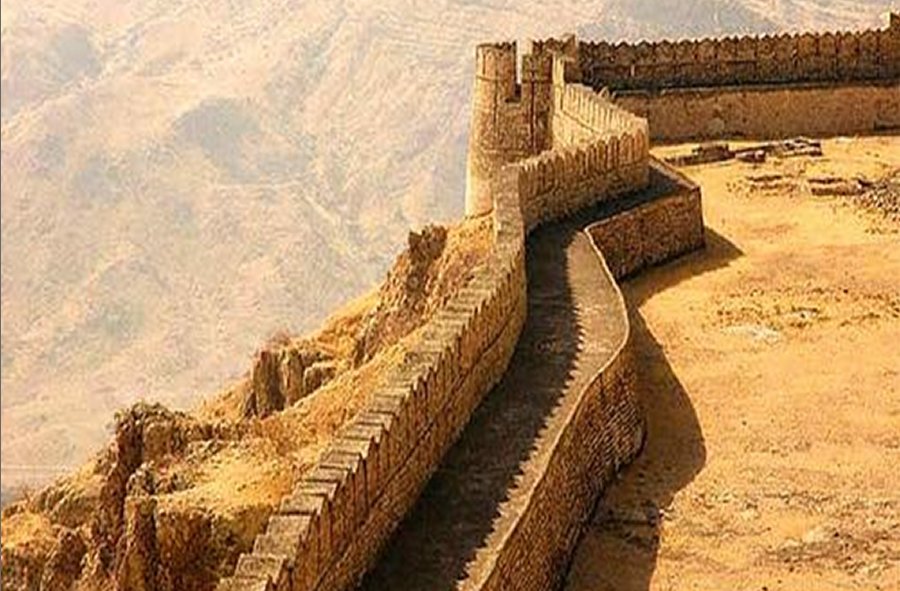MessageToEagle.com – Ranikot Fort also known as the Great Wall of Sindh is a historical fort near Sann, Jamshoro District, Sindh, Pakistan.

Ranikot Fort- located 90 kilometers (56 mi) to the north of Hyderabad – is most probably one of the world’s largest forts.
The fort’s eastern gate is known as Sann Gate and the whole structure is really gigantic; it is 35 km in length and connects barren hills.
The fortification wall, which has solid semi-circular bastions at several intervals, perfectly follows the natural contours of the hilly lansdcape of the region.
The fortification wall runs on three sides of the area, while on the northern side the lofty peaks of the higher hillocks serve as a wall.
The original purpose and architects of Ranikot Fort are unknown. However, it is believed that the fort was built during the regimes of the Sassanians, the Scythians, the Parthians or the Bactrian Greeks.
Archaeologists point to the 17th century as the time of its first construction but Sindh archaeologists now agree that some of the present structures were reconstructed by Talpurs in 1812.
Radiocarbon tests conducted at the Sann Gate confirmed that this gate was probably renovated between the early part of the 18th century and the early part of the 19th century, prior to Britain invading the fort when the Kalhoras, or most likely the Talpur Mirs of Sindh ruled over the area.
See also:
Magnificent And Massive Great Wall Of India – Astonishing Ancient Structure Shrouded In Secrecy
Incredible Padmanabhaswamy Temple And Its Ancient Treasures Hidden In Vaults Guarded By Serpents
Mystery Of The Ancient Forgotten Mizoram Civilization And Lost City Of Vangchhia
Enormous 5,000-Year-Old Harappan Stepwell Discovered In Kutch, India
The fort is huge, connecting several bleak mountains of the Kirthar hills along contours, and measures 31 kilometers (19 mi) in length. The fort is combined with several bastions in between and three of them are of semi-circular shape.
The northern part of the fort’s perimeter is a natural high hilly formation while on the other three sides it is covered by fort walls. Within this main fort there is a smaller fort known as the “Meeri” which is about 5–6 miles from the entry gate of the main fort, and is reported to have served as the palace of the royal family of Mirs.
The entire fort structure has been built with stone and lime mortar. The fort is built in a zig-zag form, with four entry gates in the shape of a rhomboid.
Two of the gates, facing each are crossed diagonally by the Sann river; the first gate is on the western side and is skirted by the river water and is difficult to approach.
The southern entry gate has a double doors gate. Within the gates there are two niches which have floral ornamentation and carved stones. The Sann gate, which is also the entrance to the Meeri, is well preserved and can be climbed to reach the top of the fort from both sides to get a scenic view of the terrain around the fort.
Copyright © MessageToEagle.com All rights reserved. This material may not be published, broadcast, rewritten or redistributed in whole or part without the express written permission of MessageToEagle.com
Expand for references






